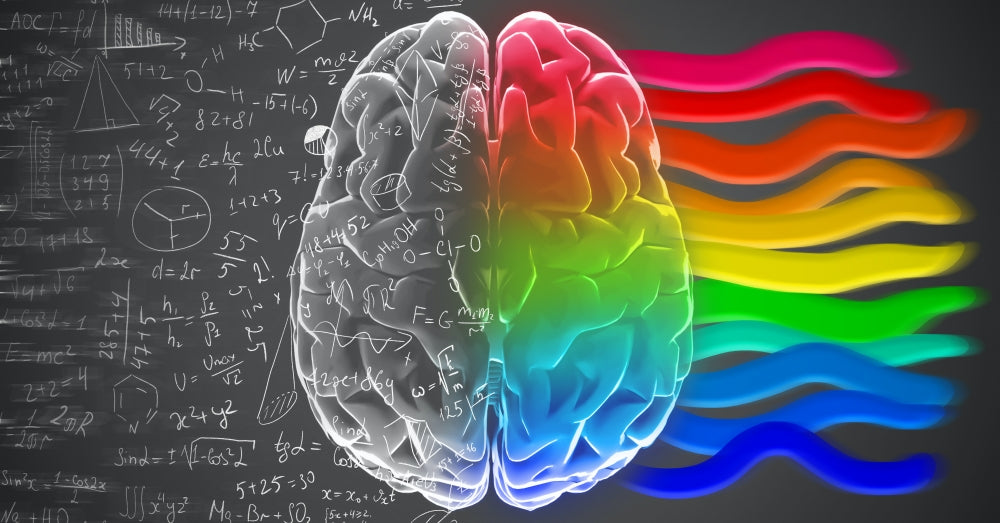Autism May Be Linked to Mirror-Touch Synesthesia, The Ability to Physically Feel What Others Feel
Guest Contributor
Guest post by Andréas RB Deolinda, BA, BSc
The idiom "before you judge a man, walk a mile in his shoes," takes a whole different turn when, by some miracle, you can literally walk in the shoes—or feel the sensations—of another person. Imagine being in a crowd and suddenly, frozen in the moment, you can feel every tactile sense around you. Like the feeling of a gentleman stroking his beard or the painful tumble of a child who has just fallen—imagine feeling every physical sensation that you can observe someone else feeling.
As crazy as it might sound, this phenomenon is real, and it's known as mirror-touch synesthesia. It's one of eight forms of synesthesia.
Although synesthesia is not as rare as it was once believed, synesthetes (people who experience synesthesia) typically don't realize their unique abilities are not common to everyone. Another fun fact: it's also believed synesthesia could be linked to autism spectrum disorder (ASD).
Mind-blowing, right? Well, before we delve into more detail, let's break down synesthesia and then look into what research has to say about the prevalence of mirror-touch synesthesia (MTS) in relation to autism.
What is synesthesia?
Synesthesia is a neurological condition where two senses are inherently crossed, causing stimulation from one sense to lead to an automatic involuntary experience in another. For example, a person with grapheme-color synesthesia will experience letters or numbers as colors. Grapheme-color synesthesia is the most common form of synesthesia to be positively linked to autism.
Hearing the word "Thursday" might cause a synesthete to simultaneously see the color orange, while another person might experience the taste of strawberries when listening to the sound of the letter "I." It's cool and crazy at the same time! So many individuals with synesthesia don't even know their beautiful experiences of the world are unique.
It is important to note that, in many cases, the synesthetic experience is unidirectional, meaning that, for example, the letter "A" can cause the synesthete to experience red, but the color red likely does not cause the person to visualize the letter "A."
Other than grapheme-color synesthesia, there exist other forms of synesthesia such as chromesthesia, spatial sequence, number-form, auditory–tactile, lexical-gustatory, ordinal-linguistic personification, misophonia, and, of course, MTS.
Within the same type of synesthesia, the experience of one synesthete is different from another; this phenomenon demonstrates how incredibly complex the human brain and neural circuitry are.
What is mirror-touch synesthesia?
Mirror-touch synesthesia (MTS) happens when a synesthete responds to vicarious experiences whilst observing another person being touched. People with mirror-touch synesthesia mirror the felt tactile experience of another person.
For example, if a person is watching TV and the actor on-screen is slapped, receives a hug, or falls down, the synesthete experiences that tactile sensory response as though it was happening to them. This response is specific to observing another human being's touch or tactile sense.
Is mirror-touch synesthesia linked to empathy?
Empathy can be defined as the ability to understand, be aware of, be sensitive to, or indirectly experience the feelings, thoughts, and experiences of others. Many people believe that mirror-touch synesthesia may cause increased empathy because of the increased ability of a mirror-touch synesthete to physically feel what another person feels. But what does the science say?
One study tested empathy by comparing a group of people without MTS to another with MTS, and it was found that those with MTS have a great ability to recognize facial expressions and emotions but do not have greater cognitive empathy. The reaction experienced by MT synesthetes seems to be an emotional reactivity to feelings of others rather than enhanced empathy toward those feelings.
Is there a link between synesthesia and ASD?
To answer this question, we need to look at what neuropsychology tells us about the neural networks of both synesthesia and autism. Without a doubt, several studies have linked synesthesia with autism. Other than the criteria stipulated under the DSM-5, individuals with ASD may experience altered sensory processing, similar to the altered sensations experienced by people with synesthesia.
The occurrence of synesthesia is believed to be linked to excessive neural connections in the brain of synesthetes that are either fewer or absent among individuals without synesthesia. This is according to the hyper-sensitivity hypothesis.
On the other hand, neuroimaging studies found that individuals with autism have differences in grey and white matter and cortical connectivity compared to non-autistic individuals. Linking synesthesia to autism, it's hypothesized that specific brain changes and an increase in local sensitivity plays a role in both synesthesia and autism.
So basically, both autism and synesthesia have common complex neural hyper-connectivity in the cortical network, which gives rise to the ability to be attentive to detail and make connections that others can't.
Baron-Cohen, et al., also found that synesthesia is about three times more common in adults with autism.
What about a link between mirror-touch synesthesia and autism?
In terms of the link between mirror-touch synesthesia and autism, research studies remain skeptical, but some support the idea that mirror-touch synesthesia (MTS) is more likely to occur with autism, such as the self-reported research study by Baron-Cohen, et al.
There are some comparable traits between autism and MTS, such as lack of self-control. Individuals with autism tend to develop specific behaviors that are a response to discomfort or sensory sensitivity. For individuals with MTS, the somatosensory response to observing someone's tactile sense (touch) is similarly involuntary.
A prevalence of about 18.9% of synesthesia among individuals with autism has been documented. The study also shows that a high percentage of MT synesthetes in the sample population reported having a diagnosis of autism. More research needs to be conducted to support this finding.
The study asserts that, because more males than females are diagnosed with autism due to females masking autistic traits, females with hypersensitivity (or atypical sensory functioning) may self-identify as having synesthesia rather than autism.
To some degree, if we look at the similarities between autism and mirror-touch synesthesia, it seems there's a link between the two. However, what remains unclear is why the link exists and whether there's something more to this link that we're not seeing.
Summing up
After analyzing existing literature, it's clear so much more research is required to confidently state there is a link between mirror-touch synesthesia and autism. However, evidence suggests synesthesia often occurs in conjunction with autism. The occurrence of synesthesia has been shown to be more prevalent among a sample population of individuals with ASD compared to "typical" individuals.
The human brain is a complex structure that gives rise to incredible talents or abilities. With every discovery, we learn that science still has much to learn about our brains and central nervous system.
Did you enjoy this article? Learn more about synesthesia and other topics from Autism Parenting Magazine, the leading international publication for autism families.
Stories from our readers, contributions from our friends in the animal rescue world, updates from charitable partners, and more!





























